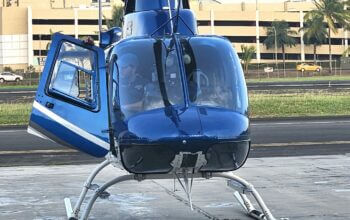Estimated reading time 4 minutes, 11 seconds.
The Canadian Airports Council has submitted comments urging the federal government to take a “light touch” approach to its new electronic travel authorization (eTA) requirement. Under the proposed rules, all foreign nationals travelling from visa exempt countries, other than citizens of the United States, would be required to obtain an eTA prior to travelling to Canada. However, the Canadian Airports Council also recognizes the eTA as an opportunity for the government to improve Canada’s overall visitor entry system.
“Canada’s airports appreciate the security role that the eTA can provide. Nevertheless, we want to ensure that the eTA not add an undue burden and cost for visitors to Canada,” said CAC president Daniel-Robert Gooch. “On the upside, we hope to see eTA considered as an alternative to a full-fledged visa for some lower risk countries.”
Countries affected by the proposed eTA requirement represent the biggest source of foreign tourists and markets for Canadian exports. The top ten of these countries delivered 2.6 million visitors to Canada in 2012, representing approximately 56 per cent of all non-U.S. international visitors. Considering each long-haul visitor spends an average of $1,600 a trip, this adds up to about $4 billion in spending.
In its submission to the government, the Canadian Airports Council highlighted three areas of consideration:
That eTA not act as a deterrent for travel
It is essential that the eTA be low cost and not serve as a deterrent to travel. The various fees and taxes the federal government imposes on aviation already position Canada poorly when it comes to cost competitiveness. Adding to this burden should not be taken without considerable regard to the impact government fees already are having on the sector.
Eligibility for transiting passengers
It would further complicate the visa process and place Canada at a competitive disadvantage if travellers were required to get both a U.S. Electronic System Travel Authorization (ESTA) and an eTA to transit through a Canadian hub on their way to the United States. As such, the ESTA should be honoured for all transiting passengers to the U.S., including those originating from visa exempt countries as well as those transiting through Canada under transit without visa programs.
Applicability as an alternative screening tool
While visas have a valid security role in screening potential visitors to Canada from countries for which there has been an identified need, the eTA should serve as an alternative to the requirement for a full visa in some cases. Consideration of the eTA as an alternative to a full scale visa should be fast tracked for visitors from lower risk countries.
Countries whose residents currently require a visa are among Canada’s fastest growing trading partners and sources for tourists. Brazil, China, India and Mexico alone brought nearly 700,000 visitors to Canada in 2012. The potential to expand tourism from these growing economies is significant and use of an eTA instead of a visa, when appropriate, could greatly help Canada grow this business.
“A more nimble system for the entry of foreign nationals to Canada will help facilitate international trade and the long-term prosperity of Canada’s tourism sector,” said Gooch. “International direct and connecting traffic are important and growing businesses for Canada’s aviation sector. More foreign travellers flying to and through Canada means new routes, and more capacity and greater competition on existing routes.”
Notice a spelling mistake or typo?
Click on the button below to send an email to our team and we will get to it as soon as possible.
Report an error or typoHave a story idea you would like to suggest?
Click on the button below to send an email to our team and we will get to it as soon as possible.
Suggest a story







